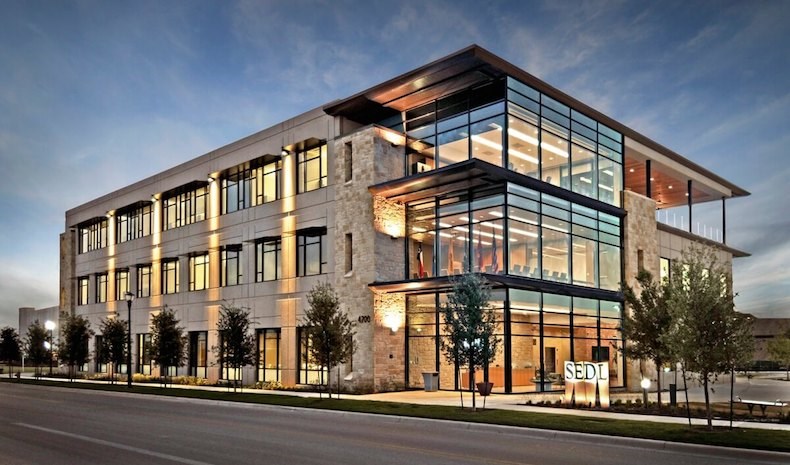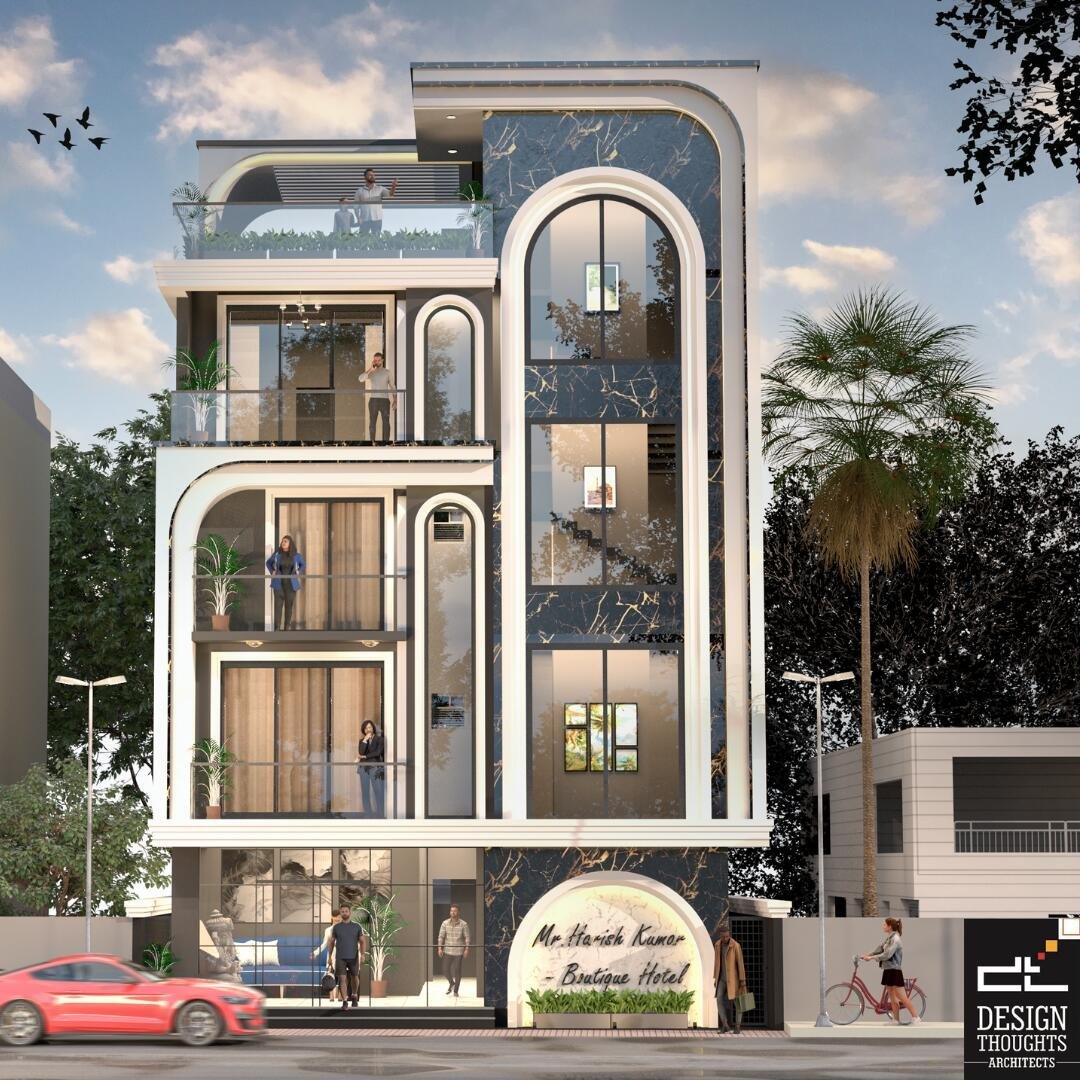Revealing the Comprehensive Solutions Offered by Commercial Architects for Modern Advancement
Commercial Architects serve a critical function in contemporary growth tasks. They blend style aesthetics with functionality while adhering to regulatory demands. Their expertise extends past plain building, incorporating lasting methods and ingenious innovations. As they navigate complex zoning regulations, Architects work together with different stakeholders to bring visions to life. This complex method questions concerning the evolving duty of Architects fit contemporary areas and the impact of their work on future growths.
Understanding the Duty of Commercial Architects in Modern Advancement
In modern urban landscapes, Commercial Architects play a vital role in shaping useful and aesthetic areas that meet varied organization requirements. Their experience prolongs past simple layout; they browse complex zoning laws, constructing codes, and environmental regulations. By collaborating with clients, they recognize certain requirements, guaranteeing that each project lines up with the customer's vision while also considering useful aspects such as sustainability and cost-effectiveness. Commercial Architects are experienced at incorporating innovative innovations and materials into their designs, boosting both the performance and energy efficiency of buildings. They carry out detailed site analyses to examine the potential difficulties and possibilities provided by a place. In addition, efficient communication with service providers and various other stakeholders is necessary, making sure that the job progresses smoothly from perception to conclusion. Inevitably, Commercial Architects contribute in developing spaces that not just satisfy sensible functions yet also add to the general personality and vibrancy of urban environments.
Concept Design: Transforming Ideas Into Fact
Principle layout offers as a crucial stage in Commercial architecture, where cutting-edge layout remedies arise from creative thinking. This process counts on collective ideation, combining diverse viewpoints to improve and boost first ideas. As concepts materialize, they transform from abstract notions right into concrete architectural truths.
Innovative Style Solutions
Transforming ideas right into fact is the characteristic of ingenious style options in Commercial design. These remedies blend creative thinking with performance, resolving the unique requirements of modern developments. By leveraging advanced technologies and sustainable techniques, Architects craft spaces that are not just visually appealing but additionally efficient and adaptable. Focus on individual experience drives the design process, making sure that settings foster efficiency and partnership. Each task gain from a customized approach, where principles are thoroughly created to reflect the client's vision while considering future patterns. Cutting-edge style options likewise prioritize versatility, permitting alterations with time as service needs advance. Eventually, these approaches enhance the general worth of Commercial rooms, making them critical in today's affordable landscape.

Joint Ideation Process
Collaboration functions as the backbone of the ideation process in Commercial architecture, fostering imagination and innovation among varied stakeholders. Architects, customers, designers, and community members participate in vibrant conversations, making sure that all viewpoints are considered. This comprehensive approach enables the expedition of different style concepts, urging special remedies that align with the project's vision. Via workshops and brainstorming sessions, ideas progress and fine-tune, changing preliminary concepts right into concrete designs. Innovation additionally plays an essential function, with tools such as Building Details Modeling (BIM) assisting in real-time partnership and changes. Inevitably, this collective ideation process not just enhances the layout result yet likewise cultivates a feeling of possession and financial investment among all parties involved, causing effective Commercial advancements.
Zoning Evaluation: Navigating Laws and Conformity
As programmers commence on brand-new jobs, understanding zoning guidelines is vital to making sure conformity and avoiding expensive delays. Zoning evaluation plays an important duty in this procedure, as it includes evaluating local zoning regulations that dictate land use, constructing elevation, density, and obstacles. Commercial Architects possess the competence to navigate these intricate policies, helping clients recognize acceptable uses and any kind of required differences.
Sustainable Layout Practices: Structure for the Future
Lasting layout practices are progressively crucial in the domain name of Commercial architecture, particularly as environmental worries proceed to rise. Architects prioritize environmentally friendly materials, energy-efficient systems, and style approaches that minimize waste and ecological effect. Integrating renewable resource sources, such as solar panels and wind turbines, allows buildings to generate their very own power and lower reliance on fossil fuels.Furthermore, lasting style stresses the significance of indoor environmental high quality. This includes using natural light, improving ventilation, and choosing safe materials to boost resident health and productivity. Green roofing systems and living wall surfaces are likewise prominent features that add to biodiversity and city cooling.Additionally, Commercial Architects typically incorporate water conservation techniques, like rainwater harvesting and drought-resistant landscaping. Through these ingenious techniques, they develop rooms that not just fulfill contemporary needs yet likewise cultivate a sustainable future, addressing the expanding need for liable growth in the contemporary globe.
Task Administration: Ensuring Timely and Efficient Implementation
Effective project monitoring is essential for making certain that Commercial design projects are completed promptly and within budget plan. This duty includes a series of duties, including the sychronisation of different stakeholders, timelines, and resources. Commercial Architects leverage their know-how to create thorough project strategies that describe essential turning points and deliverables, permitting organized progression tracking.Regular communication amongst employee and customers is critical, cultivating openness and helping with punctual decision-making. Risk management methods are likewise used to identify potential challenges early, allowing aggressive services to be established. By using advanced project monitoring devices, Architects can keep track of task efficiency in real-time, making adjustments as essential to maintain performance.
Interior Decoration: Creating Functional and Aesthetic Rooms
Interior design plays a crucial function in boosting both functionality and visual appeal within Commercial areas. Effective room preparation can optimize workflow and improve user experience, while visual style principles add to a visually appealing atmosphere - commercial architects. With each other, these aspects produce areas that are not only useful however likewise motivating
Space Preparation Effectiveness
While making best use of the utility of available room, Commercial Architects click for more info focus on area planning efficiency to create both useful and visually pleasing environments. This method involves mindful analysis of the spatial format to assure ideal usage of every square foot. Architects think about variables such as workflow, accessibility, and all-natural light to boost usability. By purposefully putting furnishings, devices, and workstations, they help with movement and communication among users, advertising performance. Additionally, zoning various locations for specific features assists in managing sound and personal privacy, producing an unified environment. Through reliable area planning, Commercial Architects can change restraints right into possibilities, making certain that each room meets the varied requirements of its occupants while sticking to regulatory demands and sector requirements.
Aesthetic Style Principles
Aesthetic style concepts go to the website play a crucial function fit atmospheres that are not just practical however additionally visually attractive. These concepts assist Commercial Architects in producing spaces that reverberate with individuals while enhancing brand identity. Crucial element consist of balance, proportion, and consistency, which function together to develop a cohesive look. Color design and materials are very carefully picked to evoke preferred feelings and support the overall motif. In addition, lights plays an important role, affecting state of mind and visibility while highlighting building functions. By integrating these concepts, Architects assure that rooms are not just sensible however additionally welcoming and motivating. Ultimately, reliable aesthetic design cultivates a favorable individual experience, urging involvement and contentment in Commercial atmospheres.
Cooperation With Stakeholders: Cultivating Effective Partnerships
Successful partnerships in Commercial design rest on effective collaboration with stakeholders, making sure that every voice is heard and valued. This collective approach involves engaging various parties, including clients, service providers, and area participants, throughout the layout and advancement process. By promoting open interaction, Commercial Architects can attend to worries, gather insights, and align the project's vision with stakeholder expectations.The integration of varied viewpoints enhances imagination and technology, bring about even more practical and aesthetically pleasing styles. Routine conferences, feedback sessions, and workshops facilitate this dialogue, enabling Architects to adapt their strategies in feedback to stakeholder input. In addition, establishing trust fund via openness and liability enhances these collaborations, causing a smoother job execution.Ultimately, the success of modern growths depends upon the Architects' capacity to navigate and balance differing passions, developing a collective atmosphere that promotes shared goals and shared success.
Frequently Asked Inquiries
Exactly How Do Commercial Architects Take Care Of Budget Constraints Throughout a Job?

What Kinds of Software Application Do Commercial Architects Frequently Utilize?
Commercial Architects typically use software such as AutoCAD for preparing, Revit for Structure Details Modeling, SketchUp for 3D modeling, and task administration devices like Microsoft Job to improve collaboration and simplify operations throughout the layout procedure.
Can Commercial Architects Aid With Getting Funding for Projects?
Commercial Architects can assist in acquiring financing for projects by preparing in-depth proposals, helping to articulate style visions, and giving economic projections that can boost the chance of securing required financing from capitalists or monetary organizations.
How Do Architects Guarantee Safety During the Building Refine?
Architects assure security throughout construction by carrying out extensive design requirements, coordinating with designers, conducting normal site examinations, sticking to regional laws, and fostering communication amongst all stakeholders to alleviate threats and advertise a safe workplace.
What Recurring Support Do Architects Provide After Project Conclusion?
After task completion, Architects provide continuous support with upkeep assessments, efficiency analyses, and design adjustments. They assure buildings meet advancing needs, address potential problems, and keep conformity with regulations, promoting a long-term relationship with clients.
Comments on “commercial architects and the Impact of Collaborative Stakeholder Engagement”